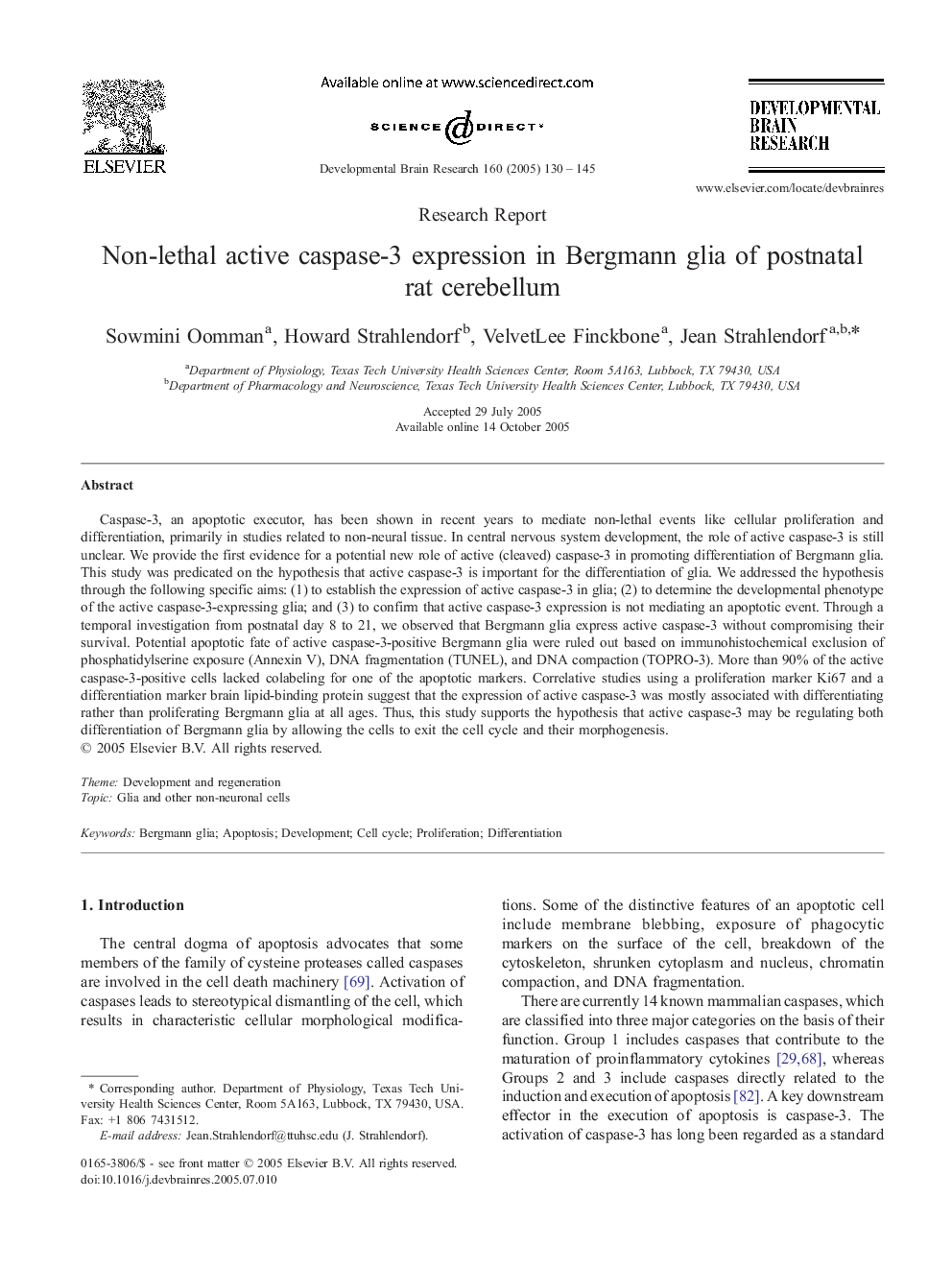| Article ID | Journal | Published Year | Pages | File Type |
|---|---|---|---|---|
| 9414487 | Developmental Brain Research | 2005 | 16 Pages |
Abstract
Caspase-3, an apoptotic executor, has been shown in recent years to mediate non-lethal events like cellular proliferation and differentiation, primarily in studies related to non-neural tissue. In central nervous system development, the role of active caspase-3 is still unclear. We provide the first evidence for a potential new role of active (cleaved) caspase-3 in promoting differentiation of Bergmann glia. This study was predicated on the hypothesis that active caspase-3 is important for the differentiation of glia. We addressed the hypothesis through the following specific aims: (1) to establish the expression of active caspase-3 in glia; (2) to determine the developmental phenotype of the active caspase-3-expressing glia; and (3) to confirm that active caspase-3 expression is not mediating an apoptotic event. Through a temporal investigation from postnatal day 8 to 21, we observed that Bergmann glia express active caspase-3 without compromising their survival. Potential apoptotic fate of active caspase-3-positive Bergmann glia were ruled out based on immunohistochemical exclusion of phosphatidylserine exposure (Annexin V), DNA fragmentation (TUNEL), and DNA compaction (TOPRO-3). More than 90% of the active caspase-3-positive cells lacked colabeling for one of the apoptotic markers. Correlative studies using a proliferation marker Ki67 and a differentiation marker brain lipid-binding protein suggest that the expression of active caspase-3 was mostly associated with differentiating rather than proliferating Bergmann glia at all ages. Thus, this study supports the hypothesis that active caspase-3 may be regulating both differentiation of Bergmann glia by allowing the cells to exit the cell cycle and their morphogenesis.
Keywords
Related Topics
Life Sciences
Neuroscience
Developmental Neuroscience
Authors
Sowmini Oomman, Howard Strahlendorf, VelvetLee Finckbone, Jean Strahlendorf,
